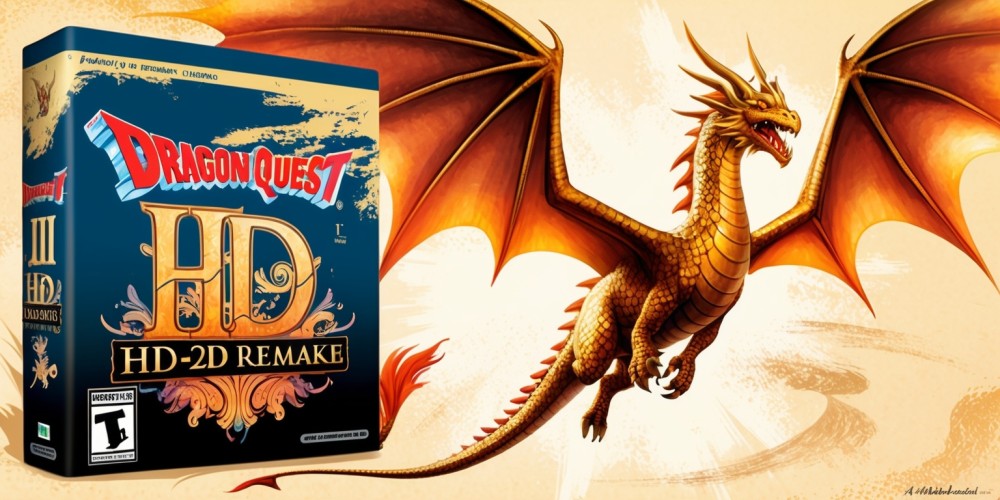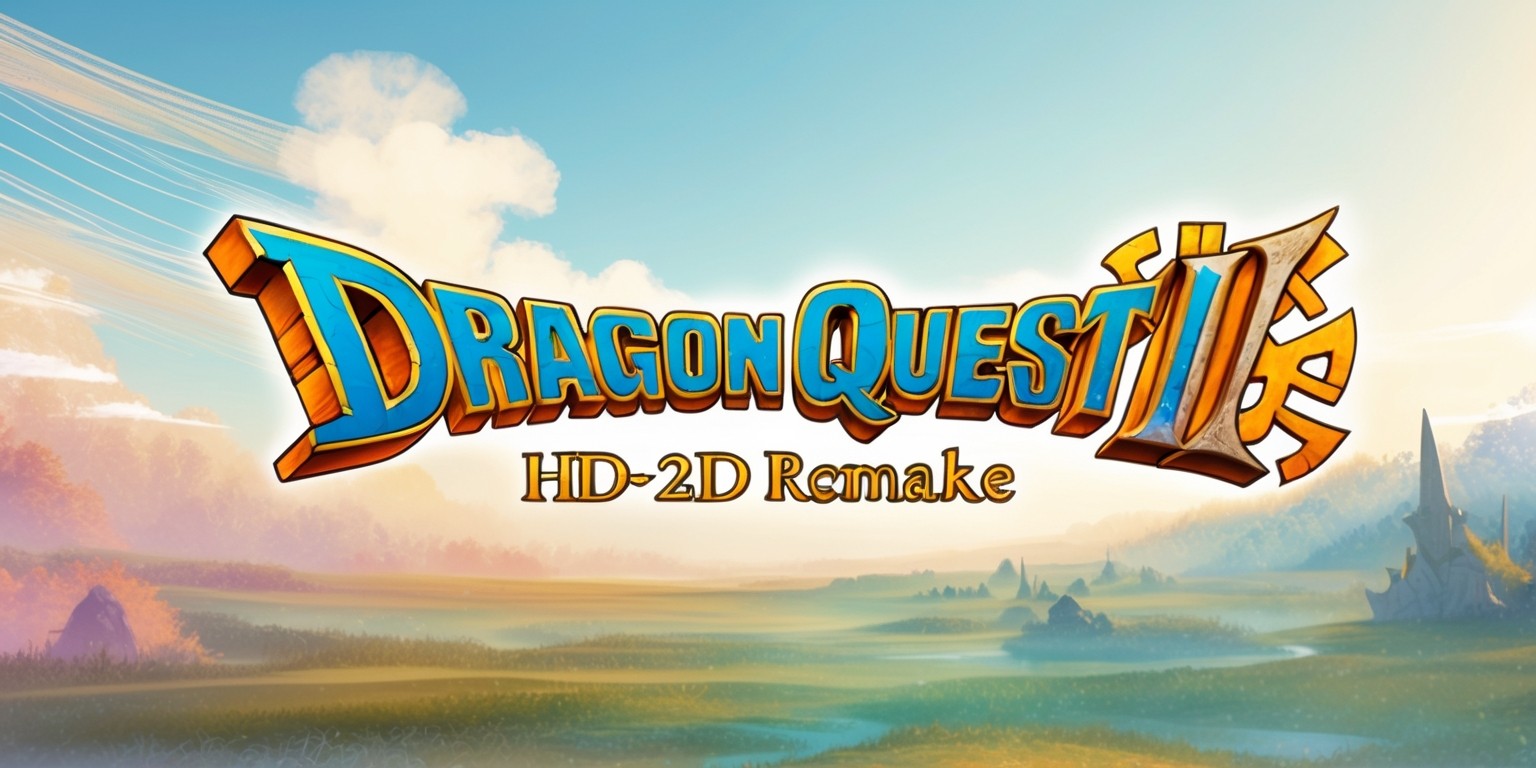Reviving a Classic: A Deep Dive into Dragon Quest III HD-2D Remake
11 Nov 2024

Within the expansive realm of role-playing games, few titles evoke as much nostalgia as Dragon Quest III. The recent HD-2D remake of this classic serves as an homage to its roots, while attempting to engage a modern audience. With its vibrant visuals and revamped gameplay mechanics, it connects the past with the new. However, that very endeavor also highlights some of the challenges that come with resurrecting an iconic title many have cherished for decades. This reflection explores the different facets of the game, offering a detailed examination of its strengths and weaknesses as it journeys through familiar vistas coated in the sheen of modern technology.
Embracing Nostalgia
From the outset, Dragon Quest III HD-2D Remake immerses players in a world that feels deeply familiar. The remake captures the very essence of nostalgia, drawing players into its embrace while highlighting the passage of time. The game doesn’t tiptoe around its historical roots; it plunges players directly into its retro, albeit pixelated, charm.
Classic JRPG Mechanics
At its core, Dragon Quest III remains a quintessential turn-based RPG. Players must select attacks and spells, engage in a strategic dance of resource management, and prepare for battles against waves of foes. This foundation is both a strength and a potential stumbling block as it risks feeling antiquated by today’s gaming standards.
Visually Stunning Overhaul
The HD-2D graphics bring a striking new dimension to the game. Enhanced sprites dance atop beautifully rendered 3D backgrounds, evoking memories of earlier gaming experiences while ensuring a smooth, modern interface. The vibrant color palette and intricate details serve to revitalize the landscapes, making exploration a visual treat.
Modern Adjustments

The integration of modern conveniences—such as autosave features, streamlined navigation with objective markers, and a greater number of save locations—aims to ease players into the experience. These elements cater to contemporary players accustomed to seamless gaming experiences, yet they don't entirely mask the old-school grind that characterizes Dragon Quest III.
The Challenge of Difficulty
As players venture into combat, they quickly realize that the challenge scale hasn’t softened much. While different difficulty settings are available, even adjusting to 'Dracky mode' doesn't significantly alter the fundamental difficulty of encounters. The decision to let players feel safe from the brink of defeat without addressing the grind leaves them longing for a fairer, more balanced combat system.
Automation vs. Strategy
While the option to automate party member actions can save time, it also dilutes the strategic layer that makes turn-based RPGs engaging. Letting characters act without player input may speed up combat but can lead to grave mistakes when facing tough enemies. Players may often resort to manual commands to ensure survival, illustrating the tension between convenience and control.
The World Awaits
The game's world beckons adventurers, filled with secrets, hidden treasures, and engaging side quests. The exploration aspect liberates players, allowing them to delve into nooks and crannies, creating a delightful sense of discovery. However, the frequent random encounters can disrupt the flow, pulling players into battles that interrupt exploration.
Navigating Puzzles and Quests
Acquiring a boat opens up new adventures, yet it also brings forth a unique array of difficulties. As players attempt to gather orbs, the game offers little guidance on where to find necessary items, leading to potential frustration. This lack of direction may push players toward external guides, as the intricate puzzle of item collection requires significant backtracking.
Sound Design and Voice Acting
The remastered soundtrack enhances the atmosphere, wrapping players in a rich auditory experience. However, the introduction of fully voiced dialogue may not resonate with everyone. While conceptually appealing, the execution can feel awkward, especially when accents lean toward stereotypes, raising eyebrows in a modern context.
Balancing Tradition and Innovation
Many fans of the original game may appreciate its unwavering commitment to tradition, but some may find it stifling. The balance between honoring the past and introducing new dynamics is precarious. While nostalgia can be comforting, it also risks alienating a newer audience that might crave more innovative gameplay.
Understanding Grinding
The age-old practice of grinding is a double-edged sword. For those nostalgic for simpler times, it may evoke warm memories. Yet for modern players, it often feels like a tedious chore. Acknowledging this difference in player expectations is crucial, highlighting where the remake could offer more customization options to ease the experience.
A Sense of Adventure
Despite its flaws, Dragon Quest III remains an adventure worth embarking on. The thrill of exploration, the satisfaction of defeating challenging foes, and the joy of uncovering hidden treasures create a compelling experience. This balanced mixture is part of what defines the franchise and allows players to lose themselves in its charm.
Mixed Reviews
Players’ feelings toward the remake will vary widely. For longtime fans, the nostalgia-laden journey may provide a heartwarming experience, appealing to their fond memories of the title. Conversely, newcomers might find the outdated mechanics less enjoyable, particularly in the face of more advanced RPG alternatives.
The Culmination of Experience
To sum up, the HD-2D Remake of Dragon Quest III walks a fine line between celebrating a storied legacy and accommodating modern sensibilities. While it successfully captures the charm of the original game through compelling visuals and remastered audio, it occasionally stumbles with its outdated mechanics and difficulty scaling. Enthusiastic fans may relish the return to Alefgard, while newcomers might find the experience a tougher sell.
The remake has undeniably sparked conversations about the preservation of classic games in an evolving industry. It serves as a testament to the elegance—and the struggles—of creating experiences that resonate across generations, making each player's adventure unique and personal.







